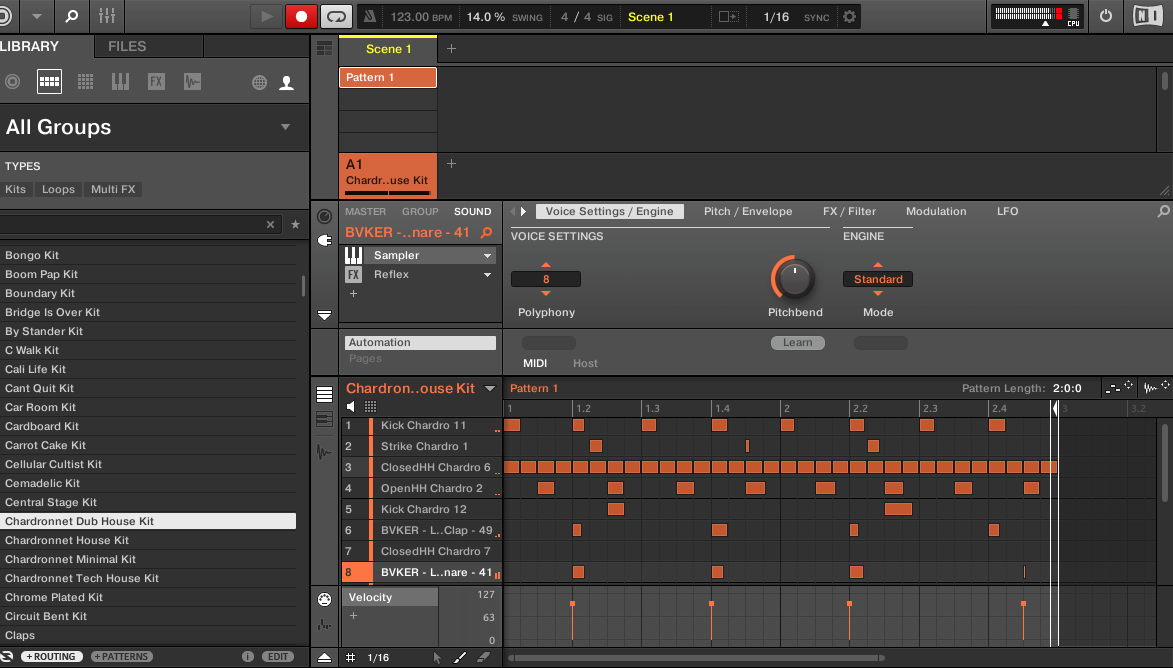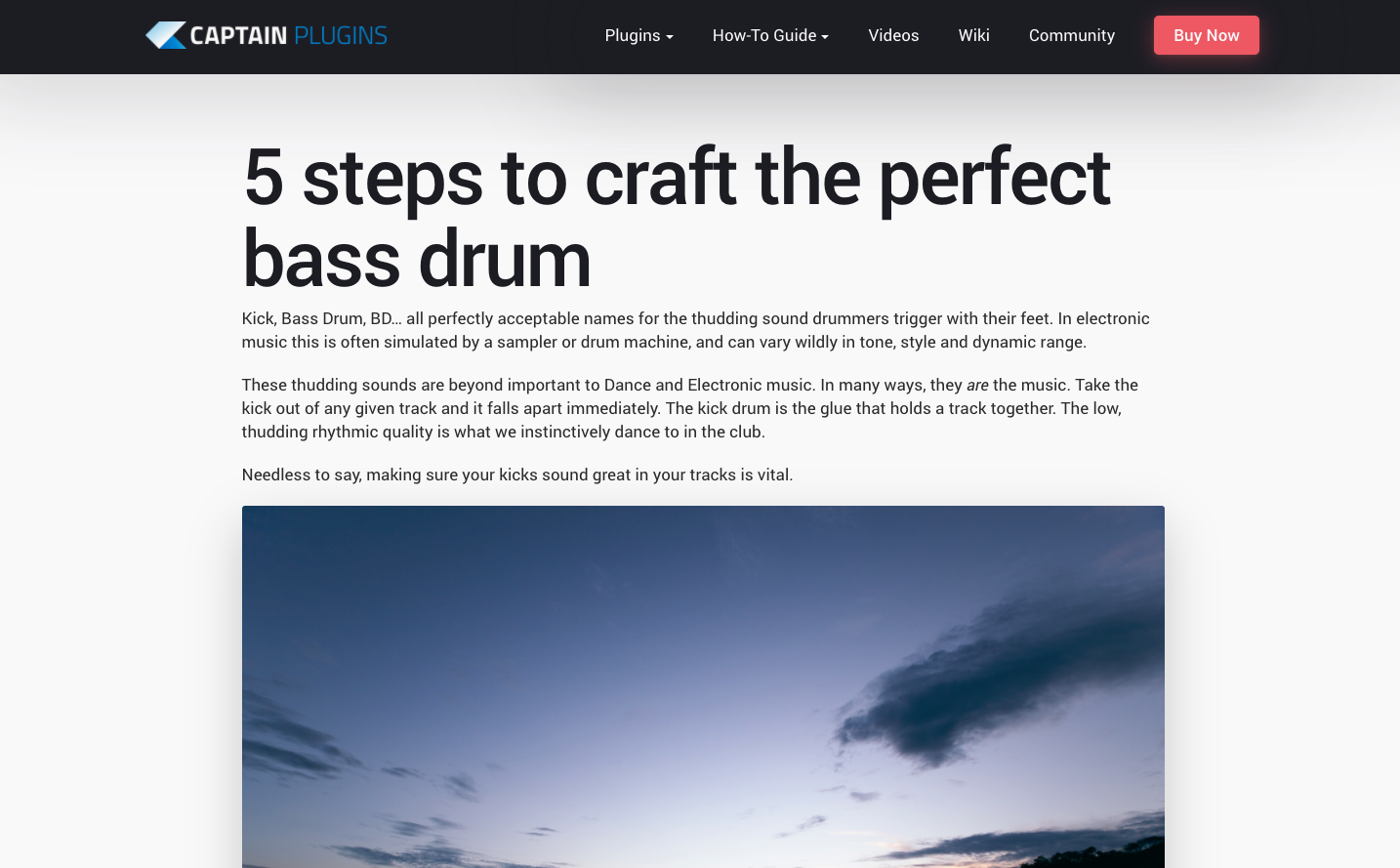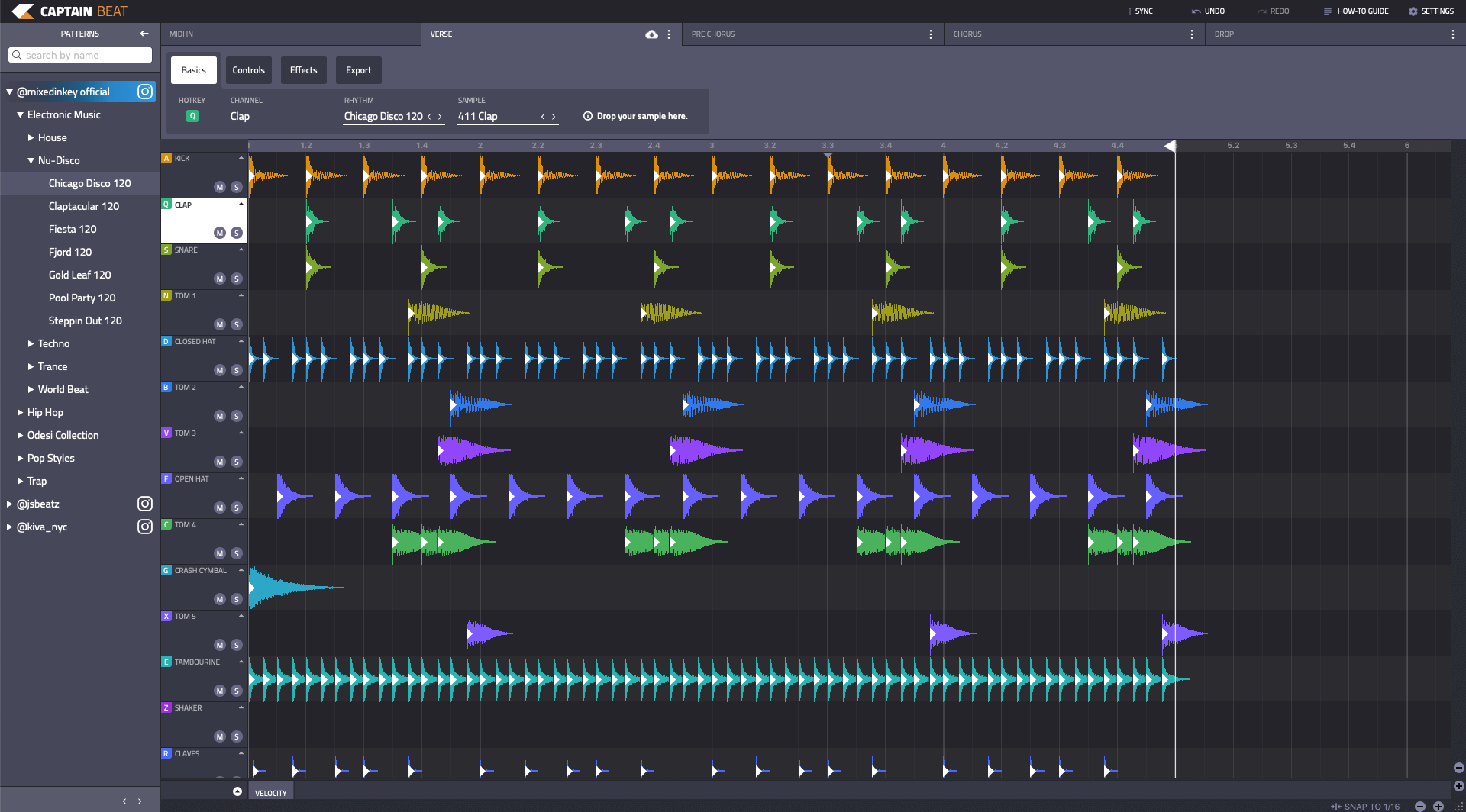Writing Better Drums: 14 Killer Tips.

The beat. It’s the essence, lifeblood and rhythm in a track. Changing the drums can radically transform songs, underlining how integral the beat is to music’s DNA. Beat-making combines sound design with syncopation, sets the pace and intensity of the song and often determines genre. They can be simple, yet writing good drums is far from it. We need some killer tips for writing better drums!
In this article, we will look at a couple of audio examples showing the construction of a drum beat in various stages.
1. Kick and snare create the main rhythm template.
The kick and snare are the lead actors in most drum beats. Hold a pen in each hand and tap out any famous beat, and you’ll find yourself tapping out the kick and snare parts. Kick, kick, snare, kick, snare, kick, snare, snare… you get the idea.
As a result, kick and snare is a sensible starting point for your beats. If you can nail your kick and snare combo, or a simple version of it, you’ve got a solid framework for the rest of the beat. If you need help contextualising the kick and snare, try drawing a straight 1/16th closed hi-hat pattern. This might help root the pattern.
Here, an acoustic Rock style drum beat starts life as a kick-snare combo. The closed hi-hat on a 1/16th pattern helps to keep us in time at this early stage.
Adding a 2nd snare beefs up the snare sound but in this case also allows a little funkiness to enter the pattern.
Dance to the beat of a different drum machine.
Captain Beat 5.0: The Ultra-Modern Beatmaking Plugin
- Mix and match rhythm patterns per-channel
- Hundreds of high-quality drum sounds
- Play and record rhythms with computer keyboard or MIDI controller
- Sophisticated MIDI editing
- Add your own samples
- Wave-form visualizer
- Advanced audio and MIDI export options
2. Create a kit first.

Choosing the right sounds for your drums is paramount to a cohesive drum part. Whether you’re creating the drums yourself using synthesis, employing sample packs or a combination of the two, having a solid kit to start with is an excellent timesaver. Try out sounds one by one and decide if they sound good together. It will be easier to tell if a drum combo is fundamentally flawed in advance of crafting a full beat with it. It also avoids you getting bogged down in sample selection or sound design when you should be focused on programming. You’ll instantly understand if your fundamental rhythm ideas work together. And of course, you can always go back and switch sounds or rhythms out later.
3. Use drum VST plugins.

Using drum VST plugins or drum machines is a slick way of writing drums. There are excellent options available, from stock plugins, like Drummer in Logic and Drum Rack in Ableton to 3rd party drum plugins like Maschine, Battery, and many more. Captain Beat is the drum VST plugin in the Captain Plugins range, and, as you’d expect, comes loaded with some unique, inspiring features. For example, you can try out different rhythmic ideas and sounds, even on a per-channel basis. By drawing from such a broad pool of genre-defining rhythm lines, you’ll be writing better drums in no time.
Whichever drum VST you use, you’ll be able to access a workflow designed to help you write better drums. Full of features and built by experts, a good drum VST will help you write better drums faster than under your own steam.
4. Craft one perfect kick, one perfect snare.

The rhythm of your kicks and snares is the fundamental rhythm of your beat. Of course, the rest of your drums are also important, but there is much more room for experimentation. Every great drum beat has a kick sound and snare sound that works together perfectly. They take the most work, because they take up the largest frequency ranges of all the drums. As a result, mistakes or poor choices can fail to fill out enough of the frequency range, and therefore sound weak. Other examples of poor kick and snare choices are a pairing that masks each other or contains nasty harmonics that don’t work with the track. Of course, EQ can fix some of these issues, but it’s generally advisable to get a great combo to start with and save yourself some unnecessary headaches.
Kick and snare need to suit the track and genre, sound great in conjunction, have weight in the right places and clarity where it counts. With so many incredible sample packs available, finding the right ones can be a laborious process. But take the time required to find the perfect combo. Your beat will thank you for it.
If you’re looking for help crafting the perfect bass drum, our step-by-step guide will tell you everything you need to know!
PRO TIP: Stack snares on top of each other.
This is a classic technique. By stacking snares on top of one another, you can emphasise the best bits of each snare sound, remove unwanted frequencies and resample to a brand new, unique snare sample. Be sure to check they’re all in tune with each other as you go!
5. Sidechain kick drums to bass.

This technique is now so commonplace, it’s likely any competent mix engineers are already doing it on most tracks.
It’s becoming hugely important in all kinds of music, because it helps the kick drum stand out from bass, which often occupies very similar frequencies.
By carving out space for the bass drum, the bass instrument can avoid fighting for supremacy.
Setting up the sidechain is simple:
- 1. Add a sidechain-capable compressor to the bass instrument channel (or bass buss).
- 2. Set the compression source to External.
- 3. In Sidechain settings, set the sidechain source as Bass Drum.
- 4. Adjust Threshold, Ratio, Attack & Release to taste.
If your intention is to sharply duck the bass whenever the bass drum plays at the same time, use a fast Attack setting and aggressive hreshold. You’ll need to solo bass and bass drum to check for pops or unwanted artefacts which can creep in. Often these can be mitigated against by adjusting the Release (try a slower release). Playing with the threshold, compression ratio and release can elicit very different results. For example, the ‘sucking/pumping’ bass effect made popular by French House artists like Daft Punk came from very aggressive, fast sidechain compression on the bass. By this method, a definitive pumping motion was applied, which had previously been considered ‘wrong’. Which goes to show how there are no real rules other than ‘if it sounds good, it is good!’
Sidechain in action
This clip has bass and bass drum lightly side-chained together. It’s fairly transparent, but the kick drum is still dominant.
This technique has been applied aggressively here, with much higher threshold, ratio and a super fast attack. This creates a much more pronounced pumping effect.
For further, more advanced information check out our detailed guide: Mixing Low End Like a Pro: How to mix Kick Drums and Bass
Write Chords Faster with Captain Chords
- Use Captain Plugins to write your own Chord Progressions, Hooks, Melodies and Basslines
- Export to your DAW
- Available on Mac and Windows.
6. Percussion. Fill in the gaps between kick and snare.
When looking at your drum grid, you’ll notice that it’s called a grid for a reason. You populate drum hits across (usually) 16 channels to craft a beat. Looking at it as a large grid can be very useful, as you can see where the kick and snare beats already are. This helps with programming the rest of the percussion, as you can avoid colliding midrange-heavy percussion like congas, toms and bongos with bass drum and snare. Meanwhile, your metals, like closed and open hi-hats, can collide with more freedom.
In addition, by avoiding the kick and snare hits as a general rule, you can often find interesting syncopation, which keeps drum beats interesting and energetic.
Our acoustic Rock beat is starting to take shape now we have begun adding percussion.
Finally, some final metals such as Ride and Crash round out the beat. It sounds like it could have been played by a real drummer!
7. Embrace Swing – groove makes drums danceable.
Whether it’s called Swing or Groove (different plugins and machines vary), it’s a wonderful way to inject life into a stale drumbeat. You can define Swing as a programmed, deliberate variation in how the rhythm of a drum rhythm aligns with the overall project tempo. Sometimes it’s added in a percentage form from 1-100% (100% being extreme, 1% being basically unnoticeable.). Other times it’s categorized as 1/8ths or 1/16ths between 50 and 75% (the classic MPC divisions). They basically mean the same thing, and experimenting within these parameters will bring out magic in your drum patterns.
Many of the drums in this pattern are slightly off the beat, or swung. This adds a human-like groove to it. By also adjusting velocity of various drums, we can make it sound much more human.
8. Tune your drums to your track’s root key.
This is specifically for tonal drums, like toms, bass drums, snares and congas.
One of the tell-tale mistakes that rookie producers make is not tuning their drums. Out of tune drums clash with the music and give the listener an unsatisfying experience.
Bass drums are essentially just low tones, and as such need to be in tune with the key of your track. Some kicks are comprised entirely of such low frequencies (below 80Hz or so) that the human ear can’t really pitch it – and thus they don’t need to be tuned. However, most kicks are made up of two parts – the thud (low end) and the snap (top end). If the snap end is out of tune with your track, it sounds bad.
Enter Mixed In Key Studio Edition.
With our unique plugin for producers, you can now determine the exact pitch of a sample in real-time, inside your DAW. You can also use it to determine the overall key of your track, which makes finding the right drum samples child’s play.
9. Panning.
A stereo drum track is comprised of a Centre and a Left and Right side signal, AKA the stereo field. It gets a lot more complicatd when we start talking about Mid-Side and phantom centre, but those aspects are only really worth discussing if you’re mastering, want to do clever processing on side signal, or have created phase issues in your L-C-R feed. Hopefully you won’t need to worry abut any of that at this stage.
Panning is the position of a channel’s output in the stereo field. It’s really important when writing drums, because imbalanced stereo fields invariably sound awful. We usually avoid hard and fast rules in production and composition because there’s often examples of broken ‘rules’ that sounmd great. The caveat to following any production advice is usually ‘if it sounds good’ or ‘it depends’! However, and despite my trepidation ever making a statement such as this, in panning, there are some genuine rules that must be followed:
Kicks and Snare body should be dead centre.
This is because they drive the track, and if they sit outside of the centre field will cause terrible confusion and major mix problems. Snares can, however, have their high mids and highs widened so long as the lower end stays central.
Balance the percussion.
Toms, Claps and Midrange Percussion can sit Left or Right, but remember to balance the stereo field or you’ll have a wonky mix. Try and find a balance of frequencies, so for instance, toms sit 2 on the Left, 2 on the Right.
Hi-hats have more freedom, but remember to balance the mix.
Cymbals and so on can be panned harder left or right than most percussion sounds if it helps the overall mix sound wider, but wide overheads are often duplicated on left and right to achieve balance.
10. Saturation adds warmth and glue.
Saturation, or distortion, can be deadly on drums. Listen to the following clips:
This clip has drums which have some saturation on individual channels, but saturation on the main drum bus has been disabled.
With the saturation enabled, the drums sound brighter and more alive.
The effect of saturation can be dramatic, akin to running a drum kit through a distorted guitar amp, or it can be subtle. Effectively, saturation subtly spreads the sound signal, creating a fuzziness. This fuzziness can subtly warm things up and glue sounds together. For this reason, saturation, even in modest amounts, can sound wonderful on busses and the main drum bus.
13. EQ each channel individually.
This advice applies to all instruments, but is equally important for drums. Each drum will have its own frequency profile, and therefore deserves its own, tailored EQ. Skimp here and you’ll have problems to fix on drum buses or main mix. Fixing them at sub or main mix stage may remove or boost frequencies of other sounds unnecessarily.
14. Reverb has profound effect on vibe.
Reverb is an important and powerful tool when writing better drums. It makes drums sound more real and gives them life. Because we’re used to hearing drums recorded and played in all manner of environments, each with its own reverb, there are tons of options that will sound cool.
However, we have also built strong associations with certain reverb types, so it’s important to consider this when making your reverb decisions.
For example, a big thick reverb with a gate applied is a staple of 80s music. Using it on a Tech House track might confuse listeners. However, this effect has been used on a thousand hit Dubstep tracks.
As a general rule, reverb on kicks is ill-advised. It adds wooliness to a sound that already has plenty of body, and can quickly create tubbiness in the mix. It can sound brilliant on percussion, though, and there is plenty of room for experimentation for different aesthetics.
Hi-hats and cymbals are an interesting proposal for reverb, because the effects can be so dramatic. For clarity, it’s best not to overdo reverb. Because the reverb creates a tail, and hats generally play in faster patterns, a loud reverb can quickly create its own washy, pillowy sound alongside the hats. This can sound great, but it really depends on what you want from the track itself.
Putting it all into action in a simple DnB beat.
This example was made in Captain Beat and pulls together much of the advice for writing better drums and applies it to a classic Drum n Bass pattern.
Kick and snare, in an iconic DnB rhythm, set out the intention of the drums.
A second snare adds body to the first, and syncopation to the beat. Velocity is crucial in making this new snare pattern sound like Drum ‘n Bass, no a military procession!

Hi-Hats mirror the 2nd snare in a common trick for writing DnB. Less attention is paid to velocity, since a strong, consistent hat sounds great.
Additional metals give the beat the transient detail and poly-rhythms familiar to DnB.
Finally, additional percussion rounds out the beat. There is very little percussion colliding.
Can you hear that the percussion is panned left and right, while the kick and snares are dead centre?
There is little in the way or Reverb, because such a fast pattern can become loose and distant-sounding with even the faintest reverb.
About the author:


